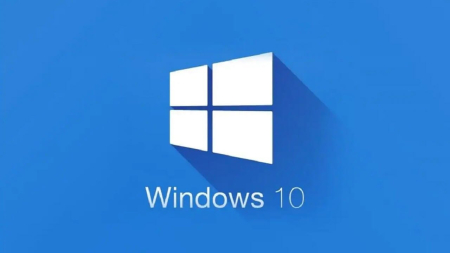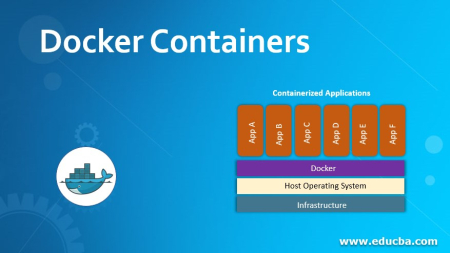Mastering Java Programming: A Comprehensive Guide for Beginners
-
06/05/2023
-
796
-
0
Java programming is one of the most popular and widely used programming languages, and mastering its concepts and techniques is essential for anyone pursuing a career in software development.
Related posts
A Comprehensive Guide to App Store Marketing Strategies
Top Profitable Mobile App Monetization Strategies You Need to Know
1. Basic Concepts of Java Programming
Java is a popular object-oriented programming language for developing web applications, mobile applications, and enterprise software. To master Java programming, it is essential to have a solid understanding of the basic concepts that form the foundation of the language.
Object-oriented programming (OOP) is a fundamental concept of Java programming. OOP is a programming paradigm that creates objects that encapsulate data and behavior. In Java, objects are instances of classes that define the properties and methods of the objects. Using OOP, developers can create modular and reusable code, making maintaining and updating software systems easier.
Another key concept of Java programming is using variables, data types, and operators. Variables are used to store data in memory, and data types define the type of data that can be stored in a variable, such as an integer, string, or boolean. Operators are used to perform operations on data, such as addition, subtraction, and comparison.

Basic Concepts of Java Programming, Source: asoservice.com
Control structures, such as if-else statements and loops, are also essential concepts in Java programming. These structures control the flow of program execution, enabling developers to create programs that make decisions and perform repetitive tasks.
In conclusion, mastering Java programming requires a solid understanding of the basic concepts that form the foundation of the language. These concepts include object-oriented programming, variables, data types, operators, control structures, packages, and libraries. By mastering these concepts, developers can create efficient and effective software systems that meet the needs of their users. If you want to know more about Java, you can see Google reviews for more details.
2. Object-Oriented Programming in Java
Object-oriented programming (OOP) is a programming paradigm that creates objects that encapsulate data and behavior. Java is a popular programming language that supports OOP principles, making it a powerful tool for software development.
In Java, objects are instances of classes that define the properties and methods of the objects. A class is a blueprint that describes the structure of an object. For example, a class can define the properties of a car object, such as the make, model, and year, as well as the methods that can be used to interact with the car, such as starting the engine or changing gears.
One of the critical benefits of OOP in Java is code reuse. Developers can create modular and reusable code by encapsulating data and behavior in objects. For example, suppose multiple program parts require access to a particular data set. In that case, the data can be encapsulated in an object and shared between the different parts of the program.
Another benefit of OOP in Java is inheritance. Inheritance allows developers to create new classes based on existing classes, inheriting the properties and methods of the parent class. This can be useful when creating specialized classes that share some standard functionality with other classes.
Java also supports polymorphism, which allows objects of different classes to be treated as the same type. Polymorphism is functional when creating programs that need to interact with multiple types of objects but want to treat them uniformly.
Overall, object-oriented programming is a powerful tool for software development in Java. By encapsulating data and behavior in objects, developers can create modular and reusable code and take advantage of features such as inheritance and polymorphism.
3. Java Libraries and Frameworks
Java is a popular programming language with a vast ecosystem of libraries and frameworks that developers can use to speed up development and simplify everyday tasks. Libraries and frameworks are pre-built codes that developers can leverage to avoid reinventing the wheel and focus on the unique aspects of their application.
One of the most widely used Java libraries is the Java Standard Library. This library provides a wide range of classes and interfaces that can be used to perform everyday tasks, such as file I/O, network communication, and multithreading. The Java Standard Library is included with every Java installation, making it an excellent starting point for new developers.
Another popular Java library is Apache Commons. Apache Commons is a collection of reusable Java components that solve common programming challenges, such as string manipulation, data conversion, and mathematical operations.
Another popular framework is Hibernate, which provides a powerful object-relational mapping solution. Hibernate allows developers to work with database data in an object-oriented manner, reducing the amount of boilerplate code required for database operations.
Finally, Java also has a range of web frameworks, such as Struts and Play, which provide powerful tools for building web applications. If you want to know more about it, you can find it by reading how to increase keyword app installs.
4. Java Programming User Interface Development
User Interface (UI) development is an essential aspect of Java programming, as it enables developers to create applications with a user-friendly interface that users can interact with. Java provides several tools and libraries for developers to create UIs for their applications.
One of the most popular Java UI development libraries is JavaFX. JavaFX provides a set of tools and APIs that can be used to create rich, interactive user interfaces for desktop, mobile, and web applications. JavaFX includes a wide range of UI controls, such as buttons, text fields, sliders, and support for animations, multimedia, and 3D graphics.
Swing is another popular UI development library for Java. Swing provides a set of components and tools that can be used to create graphical user interfaces for desktop applications. Swing includes a wide range of UI controls, such as buttons, menus, and text fields, as well as support for layout managers, event handling, and internationalization.
In addition to libraries, Java has a range of IDEs (Integrated Development Environments) that provide powerful tools for UI development. NetBeans and Eclipse are popular Java IDEs that support UI design, including drag-and-drop UI builders, code generatrs, and visual layout editors.
Java provides various powerful tools and libraries for UI development, including JavaFX, Swing, IDEs, and third-party tools and frameworks. These tools make it easier for developers to create rich, interactive user interfaces for their applications and help to improve the user experience of Java applications.
5. Java Data Structures and Algorithms
Data structures and algorithms are essential components of computer science and software development. Java provides a wide range of built-in data structures and algorithms; as well as libraries and frameworks that developers can use to create and manipulate data structures and implement algorithms.
One of the most widely used data structures in Java is the array. An array is a fixed-size collection of elements of the same type. Arrays store and manipulate data in a structured way and can be accessed using index values. Java also provides several other built-in data structures; such as lists, maps, and sets, which can be used to store and manipulate data collections.
In addition to built-in data structures, Java also provides a range of algorithms for sorting; searching, and manipulating data. The Java Standard Library includes several sorting algorithms; such as insertion sort, quicksort, and mergesort, and algorithms for searching arrays and collections of data.
Java also supports graph algorithms, which analyze relationships between objects. The Java Graph Library provides a range of algorithms for graph traversal; shortest paths, and minimum spanning trees, among other things.
Java provides various powerful tools and libraries for data structures and algorithms. These tools make it easier for developers to work with data in a structured and organized way and to implement complex algorithms that can be used to solve a wide range of problems.
6. Advanced Java Programming Topics
Advanced Java programming topics build on the foundational Java programming concepts and cover more complex topics essential for building robust and efficient software applications. Some of the advanced Java programming topics include:
Multithreading: Multithreading is a programming technique that allows multiple threads to run concurrently within the same program. Advanced Java programming covers thread synchronization, deadlock, and thread pools.
Network Programming: Network programming is designing and implementing programs communicating with other programs across a network. Advanced Java programming covers socket programming, remote method invocation (RMI), and network protocols such as HTTP, FTP, and SMTP.
Security: Security is an essential aspect of software development, and advanced Java programming covers topics such as encryption, digital signatures, and secure communication protocols.
Performance Optimization: Advanced Java programming covers techniques for optimizing the performance of Java applications, including profiling, memory management, and garbage collection.
Reflection and Annotations: Reflection and annotations are powerful features of Java that allow developers to introspect the structure of a program at runtime and add metadata to program elements. Advanced Java programming covers topics such as dynamic code generation, class loading, and the use of annotations to configure program behavior.
Advanced-Data Structures: Advanced Java programming covers more complex data structures, such as trees, graphs, and heaps, and algorithms that operate on these data structures.
Design Patterns: Design patterns are reusable solutions to common software design problems. Advanced Java programming covers a range of design patterns, such as Singleton, Observer, and Decorator, and how to implement them in Java.
Advanced Java programming topics are essential for developers who want to build high-quality, efficient, and robust software applications. These topics cover a range of advanced concepts and techniques that can help developers create scalable, secure, and performant software.
Conclusion
In conclusion, mastering Java programming is an essential skill for software developers. This comprehensive guide covers the foundational concepts and advanced topics necessary to become a proficient Java programmer. Whether a beginner or an experienced developer, this guide provides a wealth of information and resources to help you build robust and efficient software applications with Java. If you want to have more information, you can read at macOS app reviews.
Related posts
https://asoservice.com/increase-app-installs-from-google-ads
https://asoservice.com/microsoft-store-app-reviews
Thanks so much for reading this article.
Source: https://asoservice.com/




































Leave a Reply
Your e-mail address will not be published. Required fields are marked *